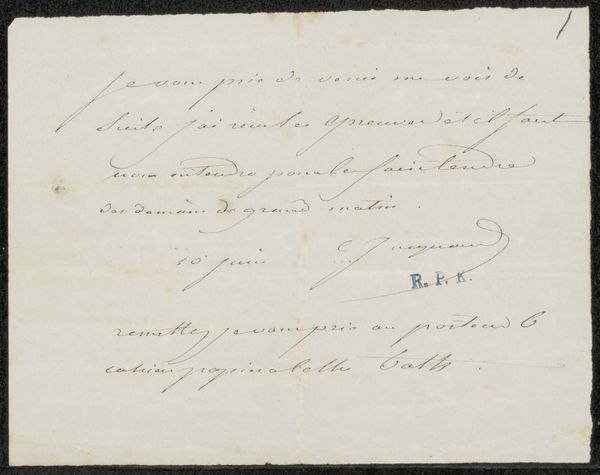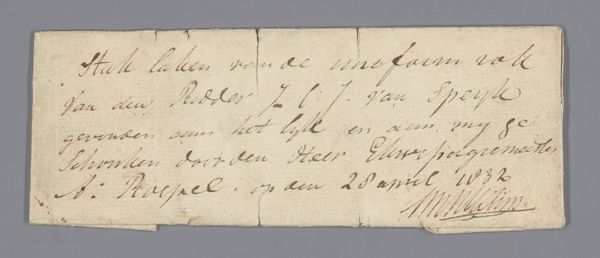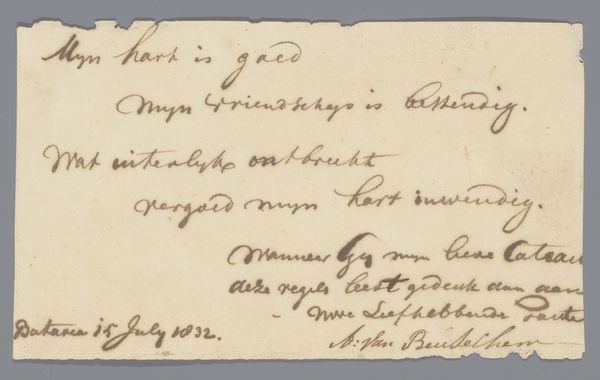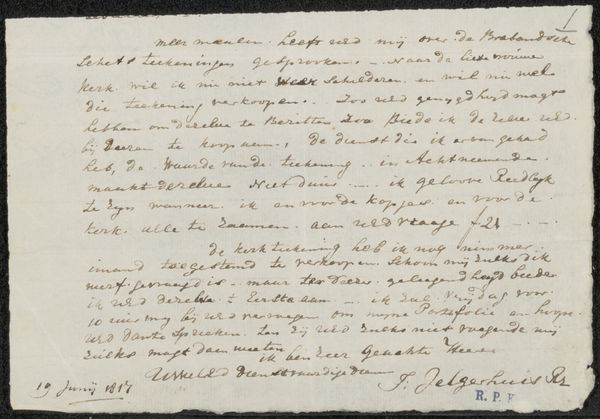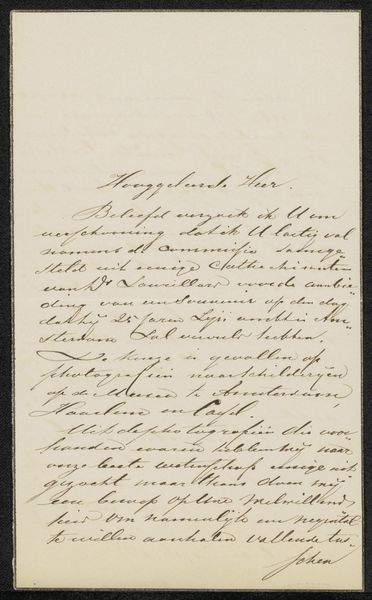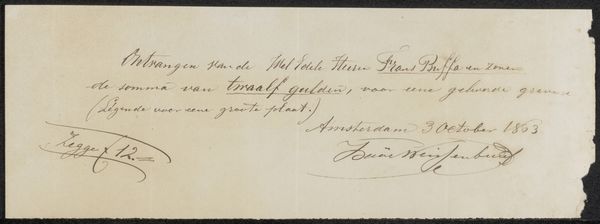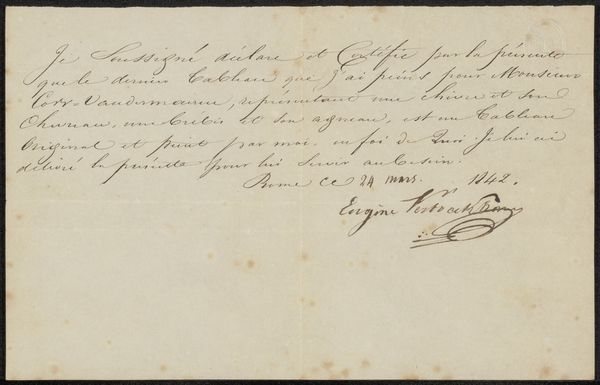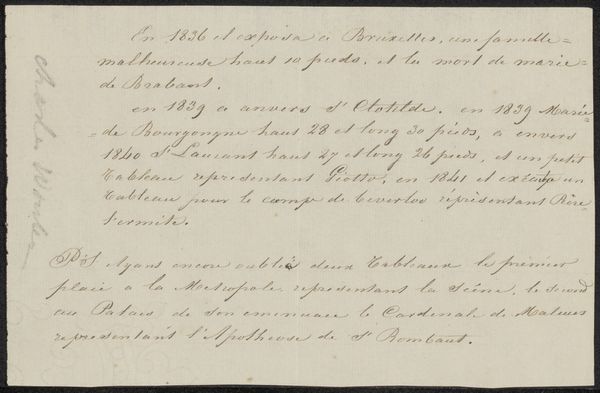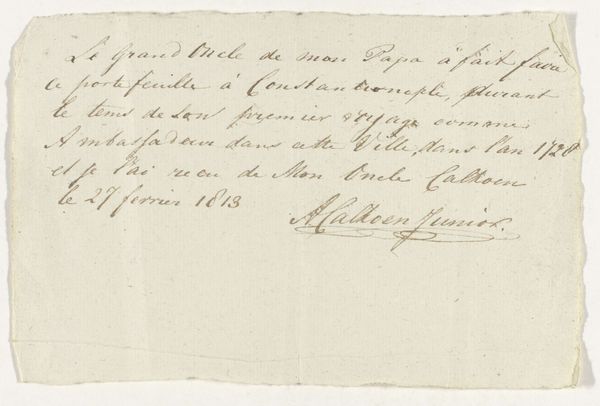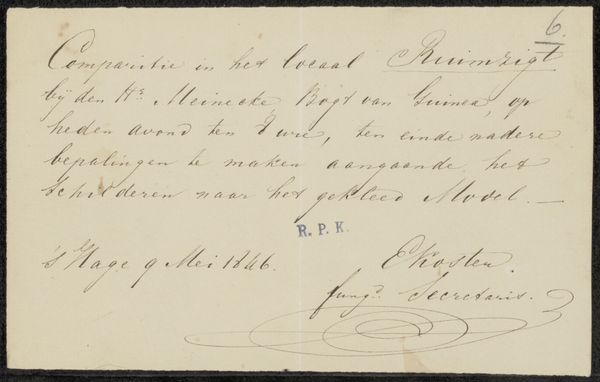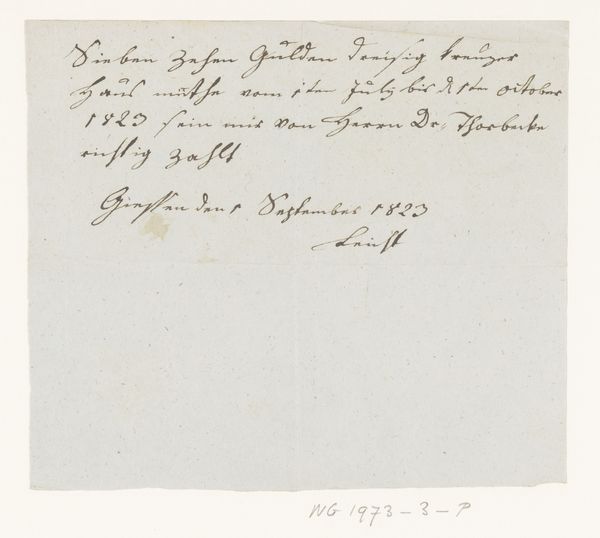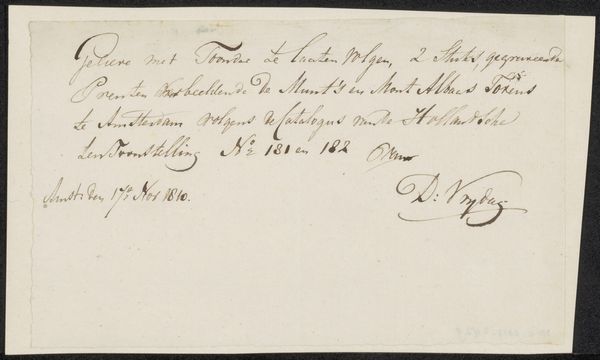
Verklaring van herkomst van het kistje vervaardigd van het hout van de kanonneerboot No. 2 van J.C.J. van Speyk 1873 - 1877
0:00
0:00
jboelen
Rijksmuseum
drawing, textile, paper, ink, pencil
#
drawing
#
aged paper
#
homemade paper
#
narrative-art
#
dutch-golden-age
#
hand drawn type
#
textile
#
paper
#
personal sketchbook
#
ink
#
fading type
#
pencil
#
ink colored
#
sketchbook drawing
#
watercolour bleed
#
history-painting
#
sketchbook art
#
watercolor
#
calligraphy
Dimensions: height 6.9 cm, width 25.5 cm
Copyright: Rijks Museum: Open Domain
Curator: Here we have "Verklaring van herkomst van het kistje vervaardigd van het hout van de kanonneerboot No. 2 van J.C.J. van Speyk," a declaration of origin of a small box made from the wood of a gunboat. The artist is J. Boelen, and it dates from 1873 to 1877. Editor: It has a weathered appearance; the colors are subdued. There's a definite emphasis on the hand-drawn elements—the script takes precedence. Curator: Absolutely. This document's significance lies in its connection to Jan Carel Josephus van Speyk, a Dutch naval hero. He famously blew up his own gunboat in 1831 rather than surrender it to Belgian rebels. This declaration essentially authenticates that a box was indeed constructed from the remains of his vessel. The event became an iconic moment in Dutch history. Editor: And note the composition. The calligraphic text, executed in ink and pencil, sprawls across the aged paper. A prominent wax seal anchors the lower-left corner, creating a visual weight and reinforcing its validity as a document of provenance. The overall effect communicates authority through handwritten attestation. Curator: The sociopolitical dimensions are also interesting. Consider how this artifact emerged in the late 19th century, a time when national identity and hero worship were actively cultivated in many European countries. Van Speyk was upheld as a figure of patriotism. This paper becomes a material assertion tied to those ideals. It is also of interest who Mr. S.H. Curout could have been. Was he a member of the family who wanted this document for posterity? Editor: Indeed. But let’s go back to this handmade paper; the artist allowed the watercolour bleed freely into the fibers, creating tonal and chromatic contrasts, accentuating specific details and adding a feeling of both depth and decay to the piece, thus lending to the visual symbolism as time goes by, making this sketch evocative and complex. Curator: It makes you ponder how such narratives can shift. Today, van Speyk's actions are interpreted more critically; now the questions of sacrifice and nationalism get raised by more parties in public forums. Editor: This paper holds both documentary and aesthetic weight; and its symbolic value reflects the turbulent nature of collective memory and the evolution of its contemporary resonance, more like an exercise of aesthetics that is in tune with modernity. Curator: Thank you for pointing this out, I found this an enlightening dialogue. Editor: My pleasure. It’s what is at stake, when analysing this visual symbol.
Comments
No comments
Be the first to comment and join the conversation on the ultimate creative platform.
